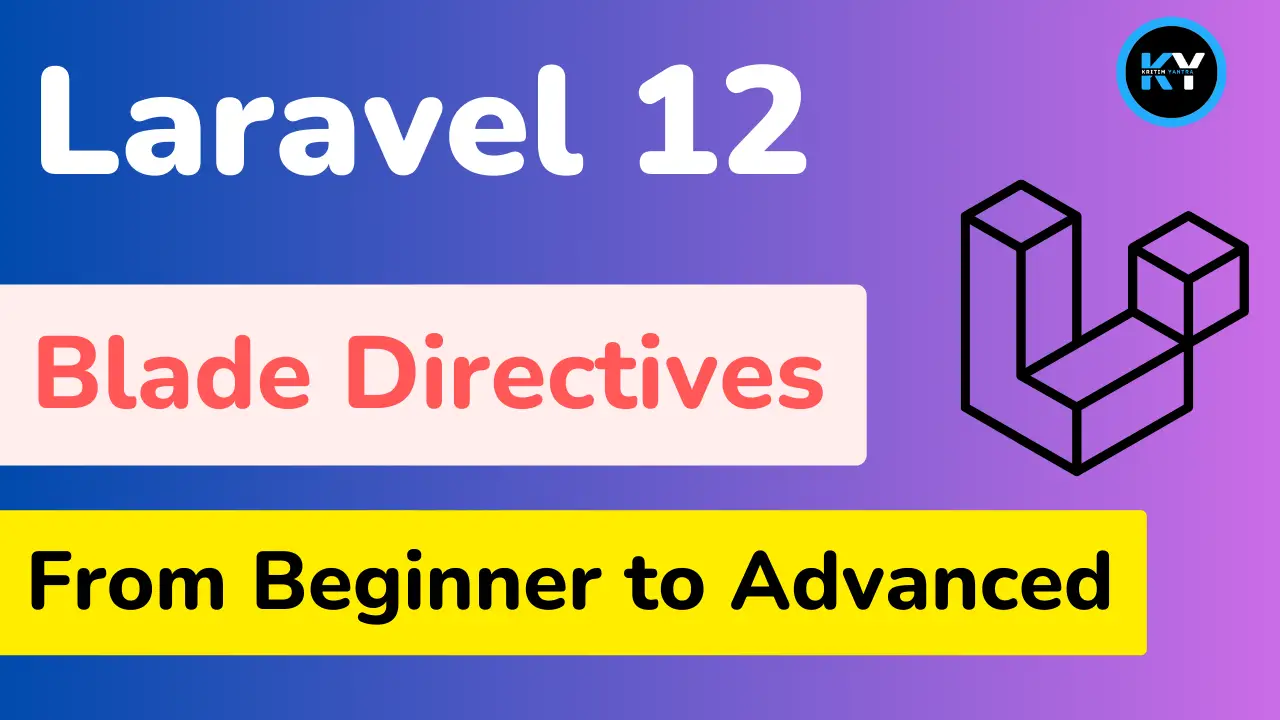How to Run Your First Laravel 12 Project – What is Laravel 12 & Why is it So Popular?

Kritim Yantra
Apr 06, 2025
Introduction
If you're new to web development, you might have heard about Laravel 12– one of the most popular PHP frameworks. But what exactly is Laravel, why is it so widely used, and how can you run your first Laravel project?
In this blog, we’ll cover:
- What is Laravel?
- Why is Laravel So Popular?
- Prerequisites for Running a Laravel Project
- Step-by-Step Guide to Running Your First Laravel Project
- Conclusion
Let’s get started!
1. What is Laravel?
Laravel is a free, open-source PHP framework designed for building modern, secure, and scalable web applications. It follows the Model-View-Controller (MVC) architecture, which helps in organizing code efficiently.
Key Features of Laravel:
✅ Elegant Syntax – Clean and expressive code structure.
✅ Built-in Authentication & Authorization – Easy user login and security.
✅ Blade Templating Engine – Simple yet powerful templating.
✅ Database Migrations & Eloquent ORM – Manage databases easily.
✅ Artisan CLI – Command-line tool for automating tasks.
✅ Robust Ecosystem – Includes tools like Laravel Forge, Vapor, Nova, and more.
Laravel makes web development faster, easier, and more enjoyable compared to raw PHP.
2. Why is Laravel So Popular?
Laravel has become the #1 PHP framework because of:
🔹 Developer-Friendly Syntax
Writing code in Laravel is clean and intuitive. For example:
// Creating a route in Laravel
Route::get('/welcome', function () {
return view('welcome');
});
Compared to plain PHP, Laravel reduces repetitive tasks.
🔹 Strong Community & Documentation
Laravel has excellent official documentation and a huge community. If you face any issue, chances are someone has already solved it!
🔹 Built-in Security Features
Laravel protects against SQL injection, cross-site scripting (XSS), CSRF attacks, and more.
🔹 MVC Architecture
Separating logic (Model), presentation (View), and routing (Controller) keeps code organized.
🔹 Rich Ecosystem
- Laravel Forge – Server management
- Laravel Vapor – Serverless deployment
- Laravel Nova – Admin panel tool
- Laravel Livewire – Frontend reactivity
🔹 Great for APIs (Laravel + Laravel Sanctum)
Easily build RESTful APIs for mobile apps or SPAs (Single Page Applications).
3. Prerequisites for Running a Laravel Project
Before running Laravel, ensure you have:
- PHP (≥ 8.2) – Laravel requires PHP 8.2 or higher.
- Composer – Dependency manager for PHP.
- Web Server (Apache/Nginx) – Or use Laravel’s built-in server.
- Database (MySQL, PostgreSQL, SQLite) – Laravel supports multiple databases.
4. Step-by-Step Guide to Running Your First Laravel Project
Step 1: Install Composer
Download and install Composer from:
👉 https://getcomposer.org/download/
Verify installation:
composer --version
Step 2: Install Laravel
Run this command to install Laravel globally:
composer global require laravel/installer
Step 3: Create a New Laravel Project
laravel new my-first-project
Or using Composer:
composer create-project laravel/laravel my-first-project
Step 4: Navigate to the Project Directory
cd my-first-project
Step 5: Start the Development Server
composer run dev
or
PHP artisan serve
You’ll see:
Laravel development server started: http://127.0.0.1:8000
Open this URL in your browser.
Step 6: See Your Laravel App Running!
You should see the default Laravel welcome page. 🎉
5. Conclusion
Laravel is a powerful, elegant, and easy-to-use PHP framework that simplifies web development. Its clean syntax, security features, and strong community make it the best choice for modern web apps.
Now that you’ve run your first Laravel project, the next steps are:
- Learn Routing, Views, and Controllers
- Explore Database Migrations & Eloquent ORM
- Build a simple CRUD app
Happy coding! 🚀
Comments
No comments yet. Be the first to comment!
Please log in to post a comment:
Sign in with GoogleRelated Posts
 Kritim Yantra
Kritim Yantra
 Kritim Yantra
Kritim Yantra
